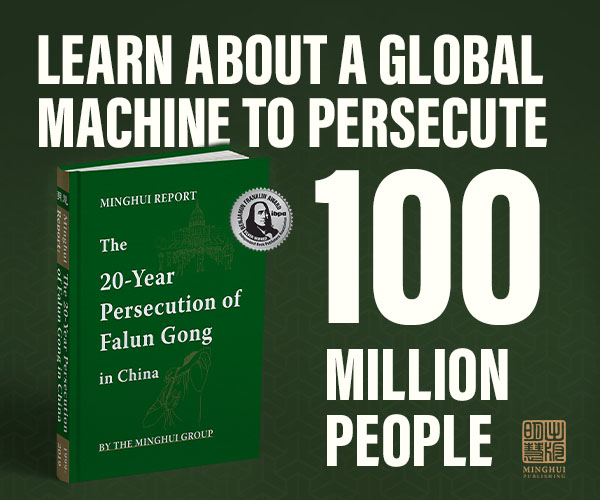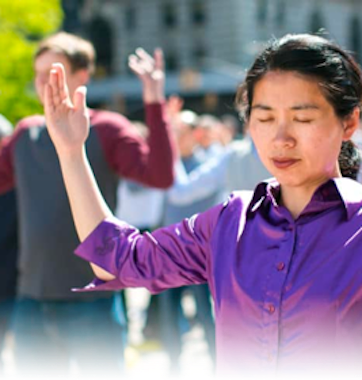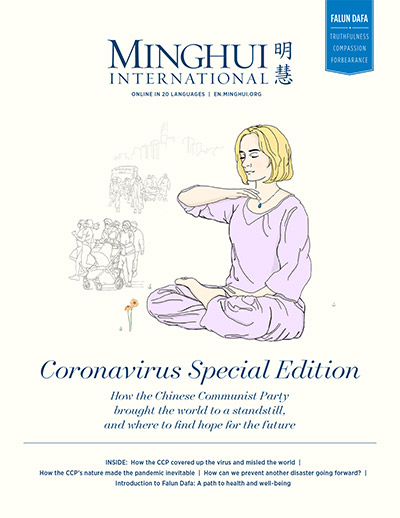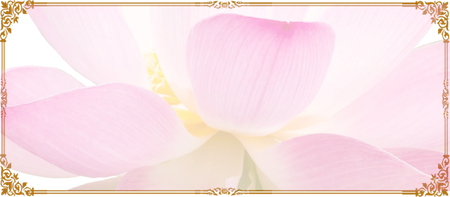(Minghui.org) Since its founding, the Chinese Communist Party (CCP) has claimed to be serving the Chinese people. But such a claim is only “correct” in the CCP-sanctioned history book, which is intended to twist the truth and brainwash the Chinese people, generation after generation.
One example is the Second Sino-Japanese War, between 1937 and 1945. Mao Zedong stated in his speech titled “The Situation and Our Policy after the Victory in the War of Resistance Against Japan” (published in Selected Works of Mao Tse-tung (Volume IV), “To whom should the fruits of victory in the War of Resistance belong? It is very obvious. Take a peach tree for example... Chiang Kai-shek squatting on the mountain did not carry a single bucket of water, and yet he is now stretching out his arm from afar to pick the peaches. “Mao wrote, “We have refuted him in the press. We say, ‘You never carried any water, so you have no right to pick the peaches.’”
While Mao claimed in the speech that Chiang and his Kuomintang (KMT, also known as the Chinese Nationalist Party) didn’t fight the invaders in the war, and that the CCP should get all the credit, the opposite is true. Below is why.
No Sino-Japanese War Heroes Recorded on Monument to the People's Heroes
The CCP is good at using propaganda to brainwash people. From elementary students to the elderly, everyone is told (through textbooks, newspapers, movies, and later television and the Internet) how great the CCP is in liberating Chinese citizens from “the abyss of misery in the old society.”
On the topic of Sino-Japanese War, the CCP has produced numerous movies to glorify the CCP’s “feat” in “defeating the invaders,” especially in recent years. Landmine War, Tunnel War, and Railroad Guerrilla War.
These movies sometimes had some absurd contents. For example:“My grandfather was killed at 9 [when he worked for the CCP].”“One [CCP] hero was able to shoot and kill a Japanese machine gunner from 400 kilometers (or 250 miles) away.”“Another [CCP] hero once destroyed a plane with a grenade.”
As more Chinese citizens are now able to access the Internet, people have more or less known the instrumental role that the KMT played in fighting the Japanese army. To accommodate this situation, the CCP also alluded to the KMT role in some newly-produced movies. Without exception, however, at least one CCP officer would be added as a key member of the KMT army leadership. By doing so, it implies, “Yes, it was the KMT that led the fight against the Japanese, but they would not have succeeded without the CCP!”
Strangely, with so many “heroes” depicted in the Sino-Japanese-War-themed movies, none of the heroes were recorded on the Monument to the People's Heroes on Tiananmen Square in Beijing. If the CCP had indeed fought hard in the war, it would have had real heroes whose names were engraved on the monument.
The Fact Speaks for Itself
According to Article 19 of China’s Archives Law, “Archives kept by State archives repositories shall in general be open to the public upon the expiration of 30 years from the date of their formation.” Over 70 years have passed since it took power, but the CCP still keeps all these documents highly confidential.
This allows lies to continue. For example, in 1995, a vice-chairman of the Central Military Committee “affirmed that the Communist Party and soldiers and civilians it had led in the base areas behind the enemy lines had been the mainstay of the Anti-Japanese War.”
But historical data shows otherwise. First, when the anti-Japanese fully started, the KMT had an army of 2.7 million soldiers while the CCP’s Red Army in the remote Yan’an only had about 20,000 soldiers. The ratio was 135:1. In the Battle of Shanghai (August–November 1937), 700,000 KMT soldiers and 500,000 Japanese soldiers fought for three months. As one of the largest and bloodiest battles in the entire war, it broke Japan’s plan of overtaking the entirety of China in months. At the time, the 20,000 or so Red Army troops were about 1,600 kilometers (or 1,000 miles) away.
Other evidence comes from the casualty data. According to Ministry of National Defense in Taiwan, between July 1937 and August 1945, the KMT launched 22 major battles and 1,117 important battles, with casualties of 3.22 million. Among them, 226 generals died in the war. The CCP, on the other hand, estimated only 35 million causalities of Chinese people, including 3.8 million military personnel. Although not challenging the KMT numbers, the CCP only gave vague numbers with no breakdown of military causalities by rank.
Other data also points to the same conclusion. Research by the Japanese newspaper Yomiuri Shimbun found that the military death toll of Japan in China was about 700,000, with a total death toll of about 1.85 million for the Japanese army during World War II. Among the 129 Japanese high officials who lost their lives in the war, only three died when fighting the CCP, while the rest of the 126 died during battles with the KMT.
The only two presentable battles by the CCP were the Battle of Pingxingguan in 1937 and the Hundred Regiments Offensive in 1940. Both of them were highly publicied—and sometimes exaggerated—by the CCP. For a long time, the CCP stated that it defeated over 10,000 Japanese soldiers in the Pingxingguan battle before later changing the number to about 1,000. Records from the Japanese military showed casualties of only more than 200.
Hau Pei-tsun, chief aide of Chiang and later Minister of National Defense in Taiwan once remarked, “The Battle of Pingxingguan and Hundred Regiments Offensive are often considered [by the CCP] as their most outstanding achievements. But compared to the entire [anti-Japanese] war, it is less than 1%.”
CCP’s Own Records
If above evidence is not enough, additional evidence is also available from the CCP’s own records.
When Japanese delegates including Kuroda Hisao visited China on January 24, 1961 and apologized for invading China, Mao made the following remarks. “I do not see things this way. The fact that Japanese warlords occupied most of China taught the Chinese people a lesson; otherwise... we [Red Army] would still have been in the mountains and would not have been in Beijing,” he said, “So the Japanese warlords have done a good thing and I want to thank the Japanese warlords.”
Another dialog in 1964 also explained Mao’s attitude. When the Japanese delegate Sasaki apologized for the invasion again when visiting China on July 10 of that year, Mao dismissed it one more time. “Why do we [CCP] thank the Japanese army? Because of the Japanese army, we worked together with Chiang Kai-shek. After eight years of war, my soldiers grew from 25,000 to 1.2 million with a base of 100 million people.”
According to Li Rui, Mao’s secretary, CCP general Lin Biao had to apologize for the Battle of Pingxingguan during the Lushan Conference in 1959.
“Lin: We lost some soldiers during the Battle of Pingxingguan. It was my mistake.“Mao: Some comrades thought it would be better for the Japanese army to occupy as little Chinese land as possible. Later we have agreed that patriotism means letting Japan occupy more lands; otherwise, it would be patriotic to Chiang’s country.”
Similarly, Peng Dehuai, a key leader who directed the Hundred Regiments Offensive, was attacked many times for the battle. In fact, that became one of his “crimes” against Mao. Along with other accusations, he was sentenced to life imprisonment in 1970 during the Cultural Revolution and died in prison four years later.
Peter Vladimirov, Soviet diplomat and journalist dispatched by Communist International to Yan’an between 1942 and 1945, described what he saw in The Vladimirov Diaries. “Mao’s principle was: This war was waged to preserve his own strength, not to destroy the enemy. To achieve this goal, it is necessary to reduce resistance and give more space to the enemy,” he wrote.
“At the 120th Division headquarters, the discussion was not about combat missions, operations, and other military issues, but about how to do business and make money. All this is done by order,” he continued, “For example, units of the Eighth Route Army and the New Fourth Army have been strictly ordered not to conduct any vigorous combat activities against the Japanese. In a word, it is forbidden to fight, if attacked, it will retreat. If it is possible, there will be a truce.”
Taken together, it is not difficult to understand why the CCP would use this strategy to seize power, instead of fighting for Chinese people’s interests as it claimed. That is why the monument at Tiananmen Square promintently mentions the Chinese civil war against the KMT, with no mention of the anti-Japanese War.
The CCP’s cover-up of the pandemic is a lesson for the world. Its aggressive expansion of communism in Hong Kong also shows the dire consequences down the road. By rejecting the CCP and bringing back authentic history, we will learn a real life lesson and help the future generations to achieve peace and prosperity.
Views expressed in this article represent the author's own opinions or understandings. All content published on this website are copyrighted by Minghui.org. Minghui will produce compilations of its online content regularly and on special occasions.
Category: Perspective










